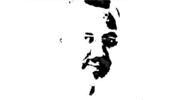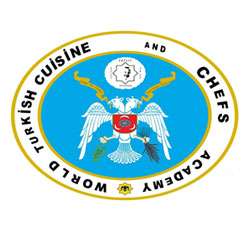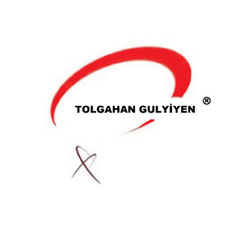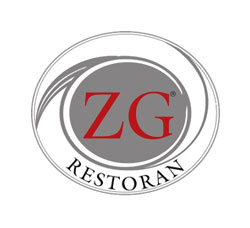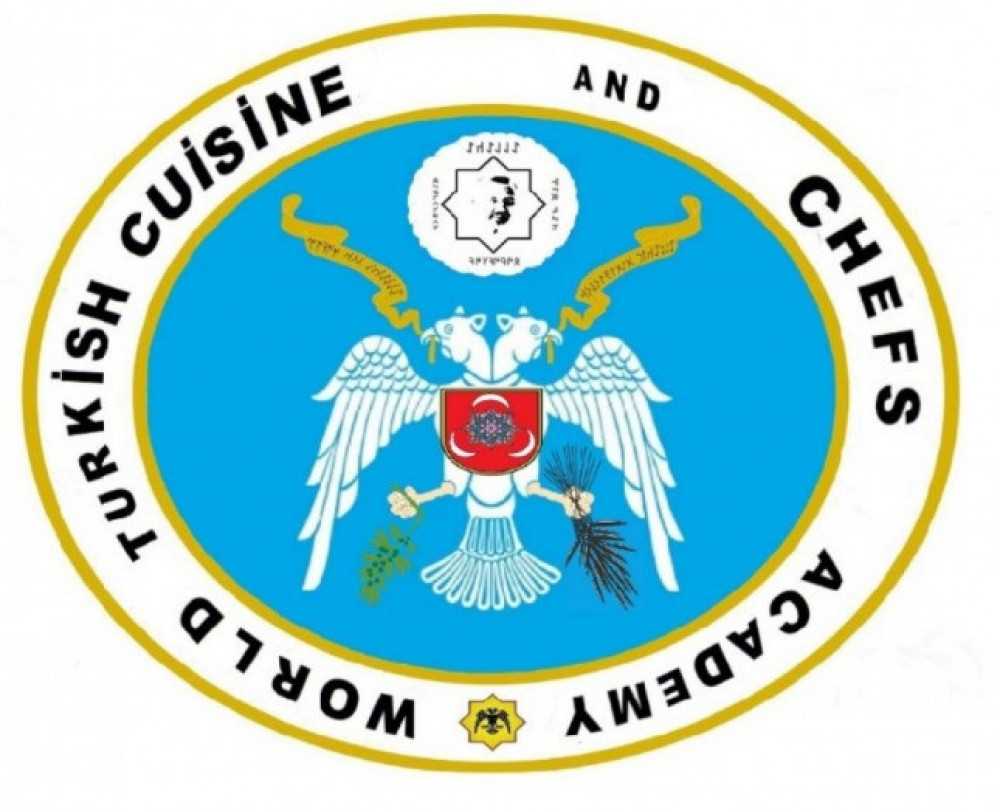
BİLGİ: Türkçe için Lütfen Buraya Tıklayınız
File Number:0018
No: 1071-1453-26-30-2022-D18
Release Date: July 01, 2022
Subject: ATATURK'S KİTCHEN - THE WORLD TURKISH CUISINE HERITAGE LIST
Contributor and Author: WTCA (World Turkish Cuisine Academy) - TCRM (Turkish Cuisine Movement) - ( www.worldturkishcuisine.com )
Archive News Link: Click Here to Reach
PDF BACK UP: https://drive.google.com/drive/folders/1Iv93o05xxVY4nqX3yzmIj2eLbDg6c9gW?usp=sharing
Legal Warning: The use of all or some of the content on our site by malicious people for any purpose without the permission of the author is a crime within the object of international laws. Legal copyrights of all content and projects on our site belong to our institution within the object of relevant laws. Before taking any action that will constitute a crime, such as the theft of intellectual and artistic works; please carefully read the legal warnings section regarding these issues and the relevant international laws in the countries you are in.
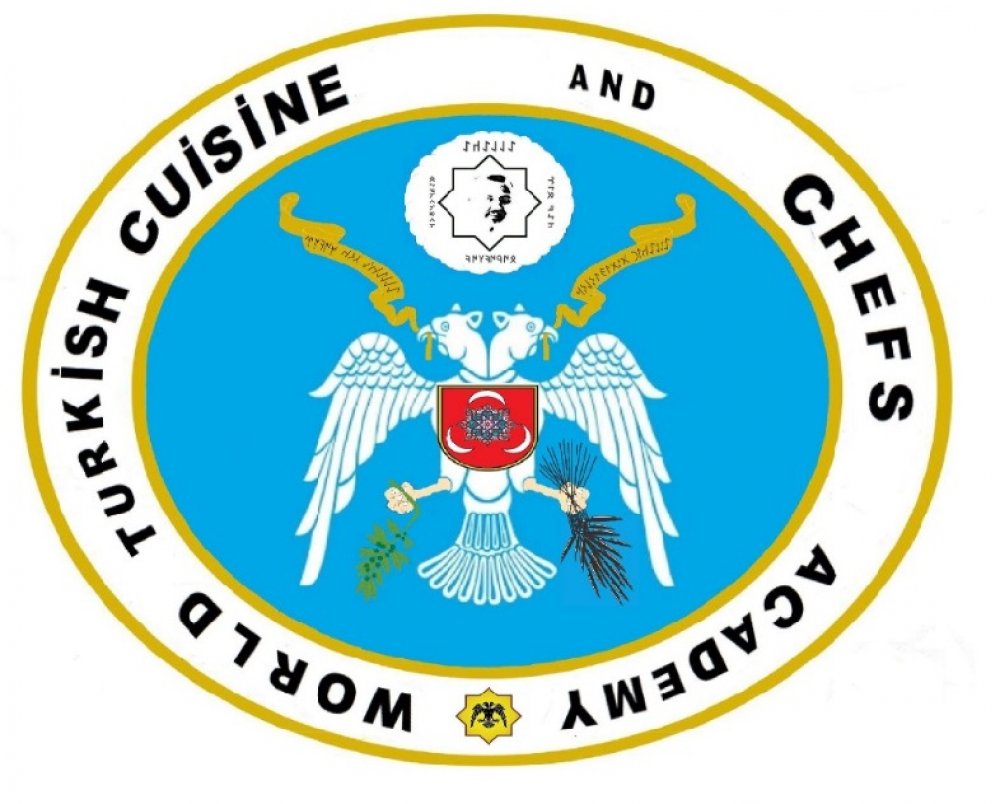
APPROVED
REPORT
ATATÜRK'S KİTCHEN
Author: Murat Bardakci
Book Name: Atatürk's Kitchen
Publisher: Turkuvaz Book
ISBN: 978-625-7548-35-9
This report prepared by WTCA-World Turkish Cuisine Academy and it has 10 pages in English and 10 pages in Turkish, and consists of 4 sections as given below.
- INTRODUCTION
- ANALYZES AND EVALUATIONS
- RECOMMENDATIONS
- CONCLUSION
I. INTRODUCTION
The book named "Atatürk's Cuisine", written by Mr. Murat Bardakçı and first published by Turkuvaz book in January 2022, has been examined in detail by our institution.
Mr. Murat Bardakçı also included information based on sources in the introduction part of the book. All of the information contained in the book is based on documents and information found in the Presidency archives. In this sense, the book has the distinction of being the first and most important work written about Atatürk's table and cuisine in its field. The book is divided into 5 chapters in total. In the book, many important issues about the table and cuisine of the great leader Mustafa Kemal Atatürk, the founder of the Republic of Turkey, are included with the information in the Presidency archives.
The book is an important historical source for anyone who says they work for Turkish cuisine with Turkish cooks. The work provides important source information to Turkish cooks who will want to improve themselves in every aspect on issues that directly or indirectly concern Turkish cuisine. All Turkish cooks around the world should try their best to make the necessary inferences from this work.
When the previously written works about Atatürk's table are examined, it is understood that there are obvious differences between the work created by Mr. Murat Bardakci and the works written in the past. The first edition of the work, which is in the size of the pocket book titled Atatürk's Table, written by Mr. İsmet Bozdag, was published by Truva Publications in February 2009 with ISB-Number 978-9944-212-73-1. The study, which is weak in terms of reference, has been evaluated by us as a study worth examining comparatively with the work of Mr. Murat Bardakci. In this sense, the pocket book titled Atatürk's Table by Mr. İsmet Bozdag, which was first published in 2009, was also described by us as a work worthy of being included in our libraries.
Because of all the issues covered in this report in detail, we describe the book "Atatürk's Kitchen" as a historical work of art, and the author of the book, Mr. Murat Bardakci, as an art historian.
The analyzes and evaluations given below regarding the book, which we describe as a work of historical art, have been made by us.
I. ANALYZES AND EVALUATIONS
- According to the information given in the book, there is no word that Mustafa Kemal Atatürk personally said about his own table. Everything written about Atatürk's table consists of what those who attended the table in question told. For this reason, the information that table conversation and what was spoken at the table preceded the kitchen where the food and food were cooked is included in the book.
- The common point of the narratives of those who talked about the table is stated in the book as follows: “Atatürk's table carries an academic identity and there are deep and scientific discussions on cultural issues such as Turkish history, Turkish language, Turkish literature, music and philosophy at the table, and the nature and future of revolutions are discussed and decided. After all, important political decisions are made here.”
- In the book, another legend about Atatürk's table is dry beans. While talking about Atatürk's favorite dishes, it is mentioned in the book that dry beans always come to the fore. Despite this statement, it was also stated in the book that there was an inconsistency between what was said on the subject and Cankaya's kitchen paperwork. In addition to this information on page 12 of the book, on the same page, "The probability of dry beans on a table with raki is already low." Author's statement is included.
- On the 12th page of the book, “It is written in serious publications about Cankaya that Mustafa Kemal Atatürk ate dried beans not with meals, but usually before going to bed in the evening, and it has not been noticed until now that another vegetable is bought much more often than dried beans in the kitchen documents” statement is included. Again, on the 12th page of the book, it is stated that okra dish is in the first place of the frequently cooked dishes in the kitchen.
- On the 13th page of the book, it is stated that Atatürk ate not only the fresh but also the canned okra. On the same page, it is stated that on the evening of February 25, 1935, Atatürk was poisoned by canned okra and the incident became a government issue. The details of this information were added as a footnote on page 113 of the book.
- In the book, it is also mentioned that Atatürk wanted to eat artichokes but could not bring them. Allegedly, Atatürk wanted to eat artichokes, but he never ate them. The fact that this claim is not true is stated as follows on page 13 of the book: "Another claim about Atatürk's table is that he never ate artichokes, and although he wish to eat artichokes in his last days at Dolmabahce Palace, he could not be brought because it was not in season. But there are records in the archive that show that this claim is not true, and it is seen that artichokes have been taken for years, and Atatürk ate artichoke 8 times between October 1 and November 8, 1938, when his illness got worse.
- On the 14th page of the book, there is the following statement: "Although there is extensive information on the functioning of the palace kitchens and the dishes cooked in Europe, our palace cuisine records are limited to shopping and personnel expenditures, the tables of the sultans and other palace members remained under the cover of obscurity." In the sub-paragraph of the same page of the book, "The same obscurity exists in Atatürk's table… There is only one source for the list of dishes cooked in Cankaya. The memories of General Fahrettin Altay… But the list given by Altay consists of only the meals that came out in five days while he was a guest in Cankaya.” 1
- In the book, it is mentioned that European dishes started to take place in the eating habits and food varieties at that time. However, the information that the lists of the shopping made for Atatürk's cuisine and the dishes recorded by Fahrettin Pasha show that Mustafa Kemal's cuisine includes both Turkish and European dishes is included in the book. It is stated that Turkish cuisine predominates on Atatürk's table.
- Information is included on the 14th page of the book: "The cards on which the dishes that will come to the table are written are called menus. The menu, which has been used in palaces, aristocratic communities and restaurants in the West since previous centuries, has not been popular with us, and there is no menu on Atatürk's table either."
- It is mentioned in the book that there are only three menus in Cankaya's archive. It is stated that one of them is related to a diplomatic invitation given in 1934, and the other two are cards containing the meals served to Mustafa Kemal in Amasya and on the train between Malatya and Diyarbakir.
- In the book, there is the information that there is a list of food and drink for the last 40 days of Atatürk.
- On the 15th page of the book, it is stated that Atatürk drank coffee with milk and tea with milk in the early hours of the morning on November 8, 1938, ate rice with oats at 11:05, was given milk at noon, soup and apple juice in the afternoon. In 18:35, it was stated based on the archive records of the Presidency that a small piece of ice was placed in his mouth to quench his thirst. “It is sad: Atatürk will not take any other food until the moment he dies after this ice…”
- In the introduction and page 15 of the book, it is stated that Atatürk's personal expenses were paid from his personal account, not from the Presidency's budget. The information given here is supported by the documents in the 5th chapter of the book. It can be seen from the following sentences on the 15th page of the book: "Both Cankaya's General Secretariat and the Private Secretary have paid maximum attention to ensure that these expenditures are not inadvertently covered by the official budget. This practice reminds us of the ceyb-i humayun system in the Ottoman palace, that is, the rule of keeping the personal expenditures of the ruler out of the state budget, and it is like a continuation of that rule…”
- On the 15th page of the book, examples of Mustafa Kemal Atatürk's personal expenditures are shown, and it is written based on documents that all of these expenditures were made from his personal account.
- On the 16th page of the book, the cooks of the European statesmen and rulers and the well-known names of the French cuisine are given and examples are given. On the same page, the following important determinations were made comparatively: “Just as there is no record of the meals that came to the tables of the sultans, those who cooked those dishes, namely the cooks, remained unknown with everything except their names. Topkapi Palace's expense book includes the names and salaries of all the kitchen staff, from the kitchen chief, who has been the highest official of the kitchen for centuries, to the chief cooks, from the cooks to the bakers, halva makers, the butchers, the chicken providers and yogurt makers, the vegetable providers, the simit makers, the ice makers, even the water servers and the wheat grinders. They all have been recorded. But the name of a cook who has found fame with the dishes he cooks is not available. Although there are many records and information describing the artists of different fields such as illumination masters, miniaturists, poets and dancers, who lived and made a name for themselves in the past centuries, only the names of the culinary artisans with the name 'Chef's name' resembling a misty dream remained..."2
- In the last paragraphs of the book's introduction, references are made to the misinformation that can be written about Cemal Granda, who is said to have been Atatürk's waiter for 12 years. It is stated on the 17th page of the book that the published studies on this subject should not be trusted much by making a short explanation on the subject, which can be a source for many studies, including academic studies.
- In the first part of the book, how the newly established State of the Republic of Turkey and the Presidency, namely Çankaya's kitchen and table were established, is explained with information based on archival documents. In the first part of the book, comprehensive information on many issues, including various troubles and problems experienced, as well as information such as the fact that the cooking stoves, known as cuisinier, where the food is cooked, are constantly malfunctioning. The book does not include only the subjects that directly concern the kitchen and the table. Considering the information on the sale of Cankaya Mansion after Atatürk's death on page 52 of the book, as an example; Many issues that directly or indirectly concern Atatürk, Atatürk's cuisine and table are included in the book.
- The second part of the book is titled “Kitchen: Cooks, Table Cooks (Waiters) and Tasters which never exist”. The first two paragraphs of this section on page 57 are as follows: “The cook of a head of state is the highest official position this professional can hold. However, there were often difficulties in finding people who could come to this office in Cankaya. Although there were many job demands, either a cook with the necessary experience could not be found or the dishes cooked by the recruits were not liked, and the shortage of cooks continued for a long time.
- On page 57 of the book, the difficulty of finding good cooks for Cankaya is mentioned, and it is informed that good cooks are in Istanbul, other big cities or Egypt. The information that the cooks from Bolu, working in the mansions of the rich in Egypt, collected 101 British coins to be given to the Muslims who would come from Greece with the population exchange in 1923, and that they sent this money to the Presidency based on the archive records of the Presidency.
- In the second part of the book, besides the difficulty of finding a cook, it is also mentioned that it is difficult to find the waiters, who were called table servant at that time. This issue is mentioned on page 67 of the book.
- In the introductory sentence of the second part of the book, the idea that being in the service of a head of state is the highest level that can be achieved in the profession, as in cookery, is stated on page 68 for table workers, that is, waiters, and therefore it is mentioned that there is always a demand for this job.
- On pages 73 and 74 of the book, the tips given by Atatürk and the amount of bonuses given to the Presidency personnel from the Parliament's budget are explained, and examples are explained with documents based on the archives.
- On the 86th and 87th pages of the book, the allegations that are mentioned in the memories of Cemal Granda, who are also mentioned as a source in scientific studies, are mentioned. It is mentioned in the relevant pages that some statements that are stated as Cemal Granda's memories and that he wrote are inconsistent and cannot be verified by inconsistent with the information-documents in the Presidency archives. It is mentioned that the memories of Cemal Granda and the contents based on the information he gave were first published as 241 pages on the dates given on the relevant pages, and later expanded to 432 pages with the additions made. While there is information on the subject on the 88th page, the author made the following statements on the 89th page: “To conclude, the memoirs published with the claim that they belonged to Cemal Granda are mostly unrealistic or some parts of other memories were added by others as text; There are similar exaggerations in the series of interviews that journalist Necmi Onur made with Cemal Granda, which was broadcast in 13 episodes between the end of 2001 and 2002, years after both Onur and Granda passed away.
- On page 89 of the book, tasters and what a taster is are mentioned. On the 90th page of the book, it is stated that there were no tasters in Atatürk's kitchen, which are used to taste the food and understand that it is safe. On the same page, there is a news in the European press about the use of tasters in Mustafa Kemal's kitchen, since it is accepted to use taster in Europe. It can be easily understood from the information in the book that the statements in the text of the news of the newspaper "Posledine Novosti", which is said to have been published in Paris by the White Russians living in exile, on 19 November 1934 do not reflect the truth. An unfounded news was included in the archives to set an example, and therefore it was included in the book. In the false news in question, it was written that Mustafa Kemal Atatürk's taster, who did not work for more than half an hour every day, received 250 thousand francs a year. Again, in the news text of the newspaper where the false news was made, Atatürk was implied and the expression "Turkiye's Dictator's table" was used and the following statement was written as unfounded: "Even though Mustafa Kemal's chief cook does not work more than half an hour every day, he receives a salary of 250 thousand francs a year. But his job is very dangerous. He is involved in tasting every kind of food that will be brought to the table of the Turkish Dictator.” This expression is the one used in the text of the news of a newspaper published in Europe on the 90th page of the book. The work written by Mr. Murat Bardakci based on historical archival information shows that this false news on the 90th page of the book does not reflect the truth. There has never been a chef in Atatürk's kitchen, who receives 250 thousand francs a year. It is understood from this: All the expressions and inappropriate references in the news that do not reflect the truth, like this false news, never reflect the truth. Similar to the statements above, on the 91st and 92nd pages of the book, unfounded news broadcast in Europe were mentioned, while one of the unfounded news in the European newspapers at that time was included in these pages.
- It is stated on page 93 of the book that after the unfounded news in the European press claiming that Atatürk used an attendant to taste his meals, applications and requests for a duty to taste food from abroad started to come to Cankaya. Some of the application-request letters in the archives are included on page 94 of the book.
- In the book, detailed information on many different issues is included together with archival documents.
- There is the following statement on page 109 of the first page of the third chapter of the book: “For a kitchen that has been studied for a long time and even a book has been written about, it would seem strange to say, 'We have no information about what dishes are cooked in this kitchen', but let me tell you at the outset: Atatürk' We do not know what the dishes are cooked in the famous kitchen and brought to the table! We have all the details of the purchases made for the kitchen over the years, but there is no record or menu about which dishes were cooked with this ingredients.”
- For the feast given by the Municipality that evening in honor of Mustafa Kemal Pasha, who went to Amasya on the 111th page of the book on September 24, 1924: Wedding (Dugun) soup, fried chicken with potatoes, Turlu(stewed mixed vegetables), Su Boregi, tulumba dessert, Karnıyarık with olive oil (Correction: Imam Bayıldı, See: Footnotes), rice, quince compote and fruit, based on the Presidency archives. In the same section, on the card printed by the State Railways during a trip to the eastern provinces in 1937: The Presidency, which included lentil soup, breaded cutlet, green beans, şehriye (noodle) casserole, and prophet grape compote, is stated based on the Atatürk Archive.
- Some of the information that was given in the previous pages of the book is given again on pages 109, 110 and 111 in the third chapter, and it is mentioned once again that there is no menu on Atatürk's table. Again in this section, it is stated that the known dishes related to Atatürk's table are limited to the 5-day menu that Fahrettin Altay stayed as a guest in Cankaya.
- The list of meals included in the section titled "My 11-Day Guest in Atatürk", which includes the memories of Fahrettin Altay, is given on pages 111 and 112 of the book as follows:
- October 22, 1925, lunch: Soup, cutlet, ograten, aubergine, eggplant, cream, chicken.
- October 23, 1925, breakfast: Toast, butter, white Turkish cheese, cherry jam and tea.
- October 23, 1925, dinner: Soup, cutlet, eggplant, borek, quince compote, melon, grapes.
- October 24, 1925, dinner: Rice broth, cutlets, asparagus, borek, creamy apple compote, melon.
- October 25, 1925, dinner: Seasoned soup, but meatballs, spinach puree, eggplant with minced meat, cheese borek, pear compote, melon, coffee.
- October 26, 1925, lunch: Soup, kebab with yogurt, green beans, rice with liver, chocolate cream, melon (no alcoholic drink on the table).
- October 26, 1925, dinner: Soup, chicken, eggplant, borek, apple, pudding, melon, pear.
- The information on pages 112 and 113 of the book shows that okra was always used more often than dry beans on Atatürk's table.
- The information in the book is that Atatürk ate canned okra as well as fresh okra. On page 113 of the book, it is stated that Atatürk ate canned okra on the ferry on the evening of February 25, 1935 and spent that night ill. It is stated on page 113 of the book that the next day at the Dolmabahce Palace this illness was learned from the report of Dr. Neset Omer İrdelp. Dr. Neset Omer wrote report after he examined Atatürk twice, with a few hours intervals. The visual of this report and the text in the report are included in pages 113 and 114 of the book.
- On page 115 of the book: Based on Cankaya's shopping list, it was mentioned that meat intake decreased, vegetable intake continued, and switched to fish instead of meat. Based on this information: "Atatürk's table includes not only fish, but also plenty of seafood, including black caviar, Japanese caviar and tarama, fish eggs." This statement is included in the book. It is also stated on page 116 of the book, based on the archive documents of the Presidency, that some seafood cans were bought when no fresh ones could be found. According to this information, the information on the purchase of seafood such as canned lobster and tuna fish is included in the book.
- On the 116th page of the book, it is mentioned that there are often seafood on Atatürk's table. The author, who mentioned that there is not much discrimination in terms of fish types, shared the information that all kinds of fish including big or small, such as swordfish, sea bass, turbot, mackerel, red mullet, mullet, coral fish and chinakop were taken, based on archival information in his book. The author also shared archive information-documents on the 116th page of the book, showing that wood and grill coal were purchased for grilling these fish. On the same page, there is information that besides lobster, mussels and shrimps were ordered to Dolmabahce Palace.
- Information on how much payment was made for which fish is given on page 117 of the book, based on the information and documents in the archives of the Presidency.
- Between pages 117 and 127 of the book, places and businesses for shopping for kitchen were included. On page 127 of the book, it is stated that there are invoices for all purchases made from these businesses.
- The information of many products received or sent to Cankaya is given in detail in the book based on archival information.
- On page 162 of the fourth chapter of the book: İt is stated that "Alcohol was always present on Atatürk's table, there were all kinds of alcohol, but the main drink was always rakı, and it was always present on the table even when alcohol was officially banned in Turkiye...". İt was stated in parentheses in the book that there was no alcoholic beverage on the table in the memoirs of Fahrettin Altay during his stay. Fahrettin Altay: October 26, 1925, lunch: Soup, kebab with yogurt, green beans, pilaf with liver, chocolate cream, melon (no alcoholic drinks on the table). (See: pages 111 and 112) Based on this, it is possible for us to deduce that alcoholic beverages may not have been served on the table for some guests or in some cases.
- While giving detailed information about the drinks purchased on page 162 of the book, the following statements are also included: “The unchanging rule of Cankaya regarding payments is that the expenses for informal dinners, invitations, entertainments and all kinds of shopping are to be paid by Mustafa Kemal himself from his personal account, not by the state."
- On pages 177 and 178 in the fifth chapter of the book, information is presented that Mustafa Kemal Atatürk paid for the expenses that concern him and his relatives out of his own pocket. On page 178 of the book, information about the monthly salary of Mustafa Kemal, which was stated to have changed frequently until his death, and the deductions made from this salary are given. On pages 180 and 181 of the book, the important article of Hasan Rıza Bey, the Secretary General of the Presidency, about Atatürk's expenditures and his attitude towards expenditures is included. On page 181, the author states, "The writings of Hasan Rıza Bey comply with the expenditure documents in the Presidential Archive." Author wrote his knowledge and gave examples on this subject in his book.
- Mustafa Kemal Atatürk's waking and going to bed times between 1931 and 1937 were randomly chosen and written by the author on page 183 of the book, based on sources.
- On pages 199 and 200 of the book, under the title of "Bounties after Death", the bonus given to the occupational groups who were in charge of the Dolmabahçe Palace during Atatürk's illness and death is mentioned. After listing the professional groups and some names that received bonuses in this section, the following information was given by the author clearly: "But there was no cook in the bonus list..."
- On page 200 of the book, an important issue is mentioned under the title of "A November 10 Mystery". On November 9, when the founder of the state was in a deep coma, 2 kilos of kaymak, 2.5 kilos of Moka coffee, four bottles of mustard, 2 kilos of cleaned walnut, 7 kilos of coffee, salep (sahlep or sahlab), 15 packages of corn flour and 6 packages of luxury soap were brought. İnformation is given by author according to archive records. It refers to the expenditures made and the products purchased between November 2 and November 9. The author made the following statements on page 201: “It is unnecessary to discuss the inclusion of soap in the last shopping list on November 9, because soap is an essential cleaning material. But when the founder of the state lived his last moments in Dolmabahce Palace, those around him had mustard, walnut, asparagus, etc., especially kaymak; The fact that coffee and oil shops and the cooperative do not hesitate to send their invoices to Dolmabahce on the very next day, on November 10, is an example of complete indifference.” These issues are included in the book based on the documents in the archives of the Presidency.
- Important archive information and documents are included between pages 206 and 274 of the book. There is an index section between pages 275 and 287. Important documents and photographs are included in color between pages 291, 328.
- The book in general is a very important historical source. The book is a very important archival work when compared to many works that are known to have been written but whose accuracy cannot be confirmed. In this sense, it is possible to describe the book as the first work written in its field.
- Based on the information above, we describe the book as a historical work of art that should be preserved.
III. RECOMMENDATİONS
The World Turkish Cuisine Academy makes the following recommendations to all communities or institutions in the world, based on the evaluations, determinations and analyzes given above.
- The book named Atatürk's Kitchen should be included in the libraries of Turkish cooks, as it contains important historical information and information that should be directly and indirectly used by everyone working for Turkish cuisine.
- The book contains information that can be shown as an example of the reasons why Turkish cuisine has not developed. This information is a lesson information that should be handled in a way that will be used for the benefit of Turkish cuisine. Analyzing this information and making inferences from this information is a necessary task for anyone who says they work for Turkish cuisine. However, the number of people who can make this inference is very limited. It is essential to make inferences from the information in the book. In order to increase the number of those who can make inferences from the information in the book: As a part of the history of Turkish cuisine, we recommend that the book be read as a supplementary textbook for students studying in the field of culinary arts in the category of studies on the history of Turkish cuisine.
- We recommend that the book be used as a textbook for teachers in culinary arts schools, lecturers and academics at universities with culinary arts programs and departments. (Added by Hulya Erol)
- Since the book contains information that will provide important benefits to Turkish cuisine all over the world, it should be encouraged to translate the work into different languages.
IV. CONCLUSİON
Due to the results obtained in the light of the above-mentioned analyzes and evaluations: The book titled Atatürk's Kitchen which written by Mr. Murat Bardakci, with international standard book number 978-625-7548-35-9; it contains the works and cultural-historical heritages of Turkish cuisine that should be preserved on earth. Therefore Book of Atatürk's Kitchen has been included in the World Turkish Cuisine Heritage List.
WTCA-World Turkish Cuisine Academy has archived and recorded all the relevant information given by Mr. Murat Bardakci in his book of Atatürk's Kitchen.
WTCA-World Turkish Cuisine Academy will encourage all people to preserve and keep this work alive by promoting the book titled Atatürk's Kitchen on different platforms in the future based on the suggestions given above. WTCA will also encourage all over the world to introduce and read the work as a training book to cooks, students who are cook-chef candidates studying about culinary arts or tourism.
WTCA-World Turkish Cuisine Academy will encourage the promotion of the work to different nations and cultures around the world by suggesting that the work be translated into English or other languages in the near and far future.
Chancellor of the World Turkish Cuisine Academy
TOLGAHAN GULYİYEN
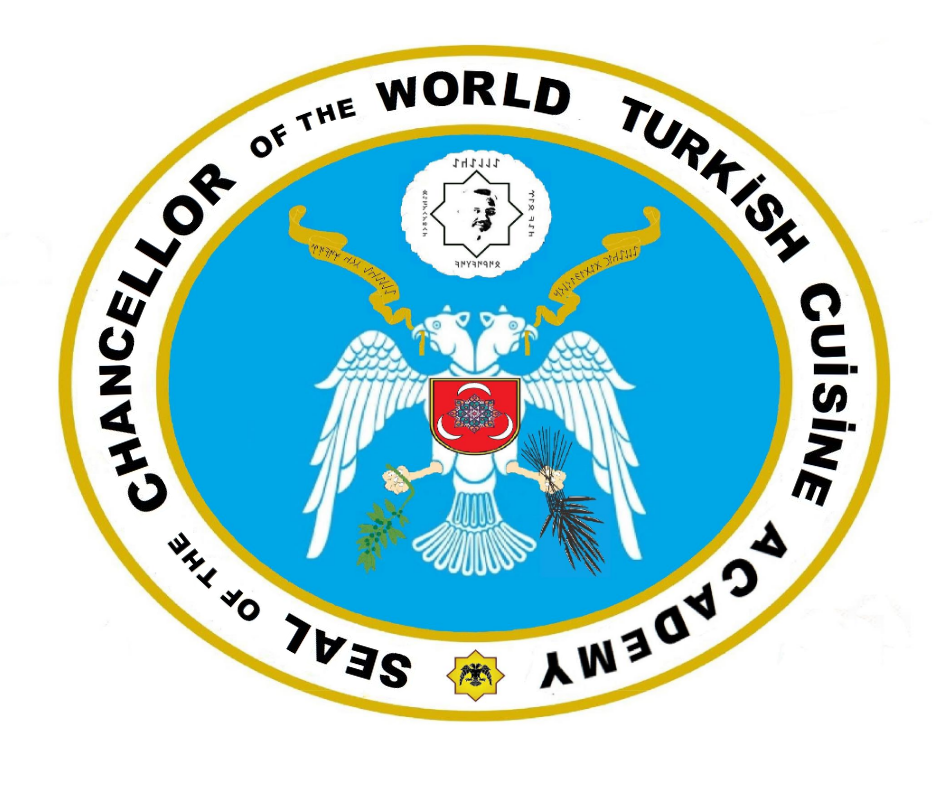
FOOTNOTE:
- For: 1 – 2 & Evaluation and comments for articles 7, 15, 27, 42, 43: Youtube Program called Seffaf Bolge Eposide 5: https://www.youtube.com/watch?v=UsKcJPUTia0
- Article 28: Imam bayildi with olive oil instead of the olive oil stew in the book (Revised by Hulya Erol)
- www.tmdh.net & www.worldturkishcuisine.com
Ek Dosyaları İndir
- 1-Book Report of Atatürk's Kitchen (706 İndirmeler)
- 2-Atatürk's Kitchen Historical Art (472 İndirmeler)
- World Turkish Cuisine Heritage List (590 İndirmeler)
